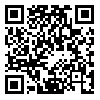Volume 4, Issue 3 (2013)
LRR 2013, 4(3): 29-53 |
Back to browse issues page
Ph.D. in Linguistics, The Research and Training Plan Organization, Tehran, Iran
Abstract: (8435 Views)
The linguistic study of “Humor” has a rich and long history, and the systematic research on linguistic mechanisms of humor goes back to Raskin’s semantic theory of humor (1985). Besides the elements such as incongruity, ambiguity and exaggeration, flouting of Grice maxims (1975) of Cooperative Principle (CP) is one of the most reviewed techniques of producing humor, which has been the subject of various linguistics studies. In this research, we study the role of maxim flouting in producing so-called “pa-na-pa” (“so what” conversational style) jokes, which have been recently spread initially on the Internet and then in the society. We also depict the process in a three-part algorithm. This new generation of Iranian jokes is considerable not only because of their linguistic but also because of its sociolinguistics characteristics in which there is no trace of insulting language toward social and ethnic minorities that itself shows a paradigm shift in Iranian jokes.
Article Type: Research Paper |
Subject:
Discourse Analysis|Sociology of Language|The use of language
Published: 2013/09/23
Published: 2013/09/23
| Rights and permissions | |
 |
This work is licensed under a Creative Commons Attribution-NonCommercial 4.0 International License. |

